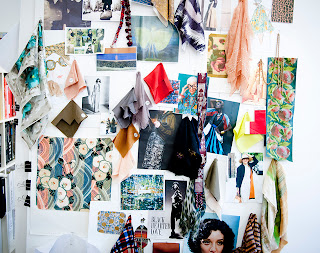News and information about the Textile Design Program at Jefferson (Philadelphia University + Thomas Jefferson University)
Monday, February 28, 2011
Alpaca Owners and Breeders of America
Selected Philadelphia University Textile Design students went to the Alpaca Owners and Breeders of America Banquet this past weekend February 18-20th, in Mt. Juliet, Tennessee. Our school placed four finalists...Angela Leonard recieved second place, Tina Brumm recieved third, Allegra Meyers recieved fifth and Leah D'Ambrosio recieved sixth place. Friday, February 18th we toured Manuel Couture from 3-4pm and then from 6-9pm the awards reception was held and the top four finalists for the Fashion Design and Textile Design categories recieved there ribbon and scholarship award. On Saturday, February 19th, we toured New Era Fiber Mill, 9:30- 11:30 am and then were treated to a lucheon at Hickory Bluff Farms. The Tennessee Alpaca Association prepared a grand buffet and during the afternoon at the farm we also viewed all the entries in an exhibition which spanned three rooms. On Sunday, February 20th the group attended The National Needlearts Association Exhibition and was able to view the newest trends and developments in the needlearts including alpaca yarn manufacturers. All in all it was a whirlwind weekend!
By Tina Brumm
Saturday, February 26, 2011
Laser Cutting
We are familiar with Creation Baumann, a Swiss company that developed curtains that we've seen in Interior Design magazine among other publications.
ENERGY is a laser cut, three-dimensional curtain that looks more like a hanging sculpture than a fabric. It transforms light through a series of slits and ridges, which at a glance are reminiscent of geometric feathers. “A voluminous fabric”, ENERGY is a paper-like material whose construction method is mysterious but intriguing.
Creation Baumann has an extensive collection of extravagant modern textiles that put traditional tweed to shame. The company is sustainably minded, optimizing water management, energy consumption and the use of chemical products along every step of the textile chain. Creation Baumann has been awarded the coveted Oeke-Tex Standard 100 certification, which is a globally uniform testing system that guarantees safe and ecologically sound principles along all stages of textile manufacture—from raw material production to final product. The Oeke-Tex Standard 100 certification also guarantees end products are free from harmful substances like formaldehyde, pesticides, heavy metals, chlororganic carriers and all allergy-inducing dyes and colorants.
by Amanda Smith
We've also seen laser cut fabric at Art Basel Miami in 2008. They featured a giant laser cut tent!
Laser cutting is not limited to cut-through shapes, but the lasers can also be controlled with the depth of a laser cut, creating sculptural relief on almost any surface. Helen Amy Murray, a London-based textile designer, experiments with this technique on leather.
 |
| photo by Camila Diedrich |
On the other end, artist Piper Shepard created paper creations that appear to be laser cut. Its attention to detail, and repetitive nature in pattern on the surface make you believe that it is laser cut. However, her designs are completely hand cut!
 |
| source |
Friday, February 25, 2011
Making way for the New Technology
Submitted by Sarah Sheber
Tuesday, February 22, 2011
Archaeological Textile Studies California Institute for Peruvian Studies • Bryn Mawr College
Join us for the CIPS Archaeological Textile Course this summer at Bryn Mawr College! This one-week course (June 5th – 11th, 2011) centers on the tools and techniques employed in the analysis of archaeological textile materials of ancient Peru and introduces students to the archaeology of the Andes.
Students will learn to identify, analyze and document the features of ancient textiles (fiber, spin and ply structure, weave structure, iconography, and various other techniques) by examining archaeological textiles from various sites in Peru and by learning how to spin and weave the Andean way. The course includes lectures on the art and archaeology of pre-Columbian Andean cultures, guest lectures by archaeologists and fiber artists, and field trips to local museums.
This course is suited to art and archaeology students, museum professionals and textile enthusiasts of any age.
For more information, contact Anne Tiballi at cipstextiles@gmail.com
--
Anne Tiballi, PhD
Director of Archaeological Textile Studies
California Institute for Peruvian Studies
PhilaU visits Highpoint, NC for ITMA!
Monday, February 21, 2011
Cotton Biomimicry Project
Saturday, February 19, 2011
Tuesday, February 15, 2011
Geotextiles
Thursday, February 10, 2011
Converse and Marimekko Collaboration
Monday, February 7, 2011
Wednesday, February 2, 2011
The Armored T-Shirt
Tuesday, February 1, 2011
Charlie Bucket's Fluid Dress
Fluid Dress from Charlie Bucket on Vimeo.

















